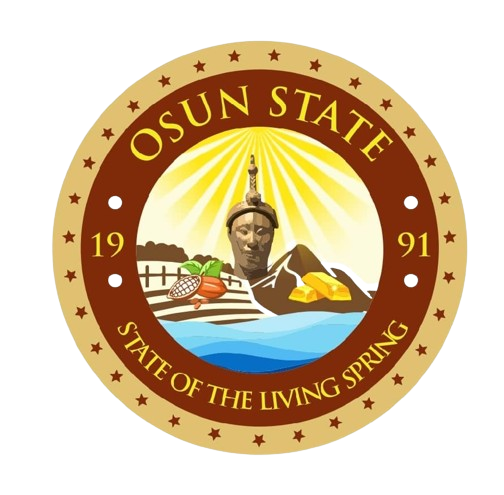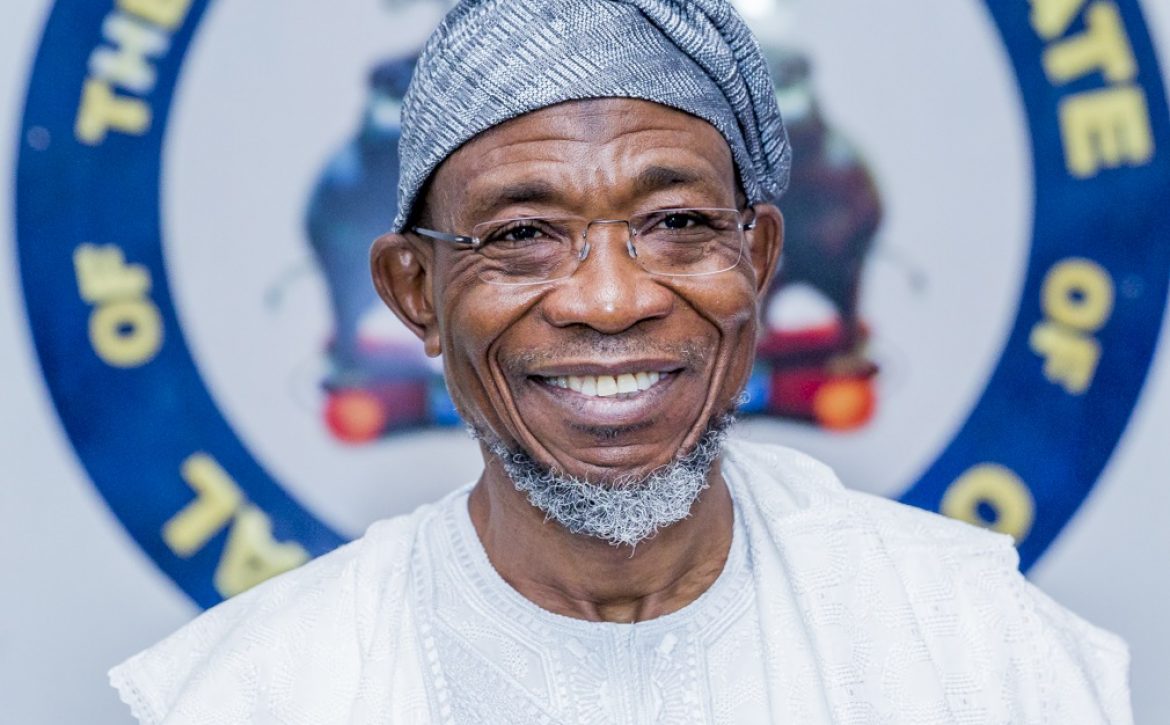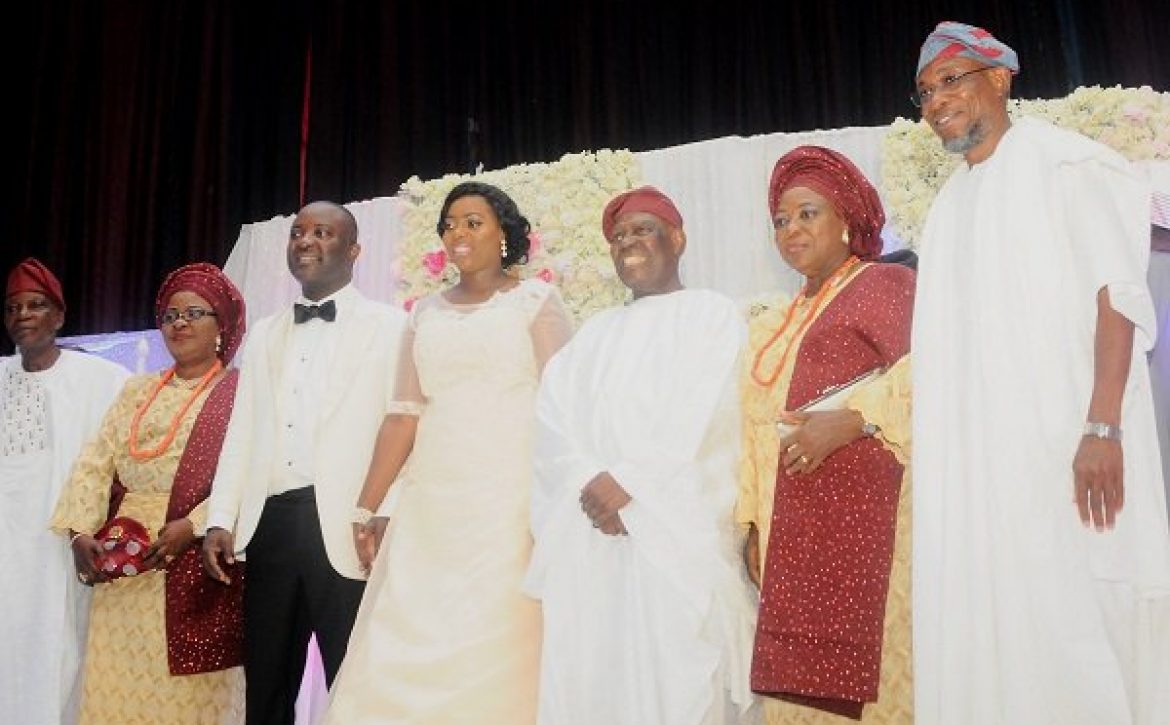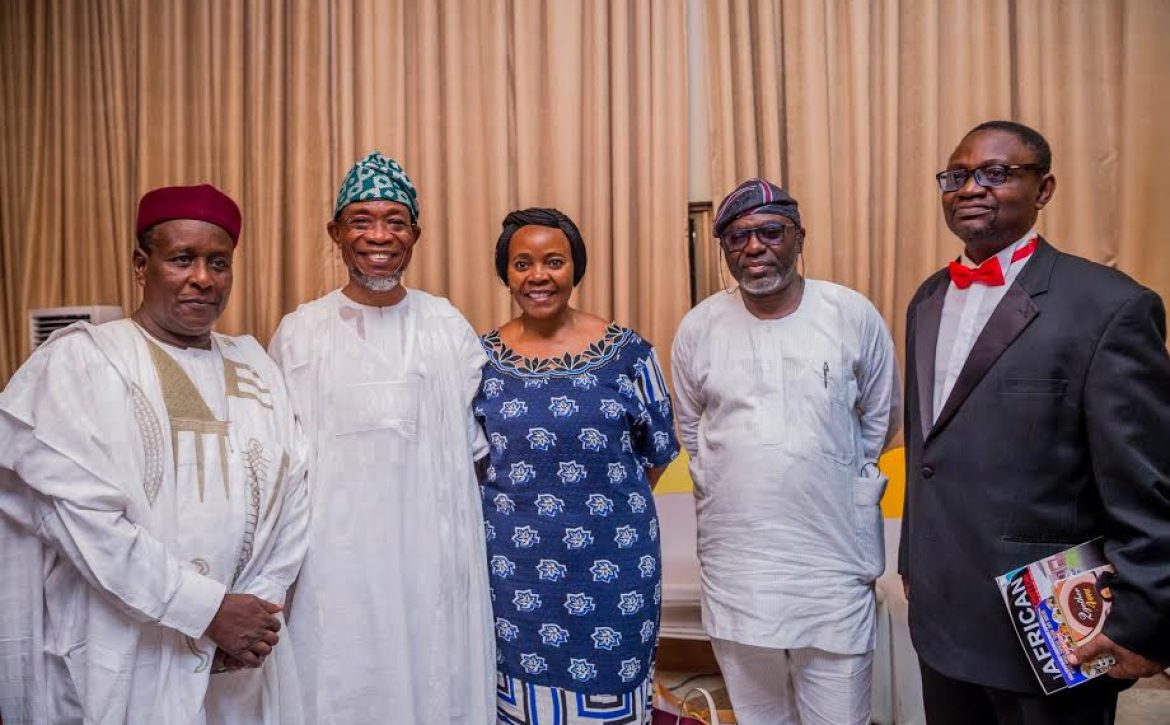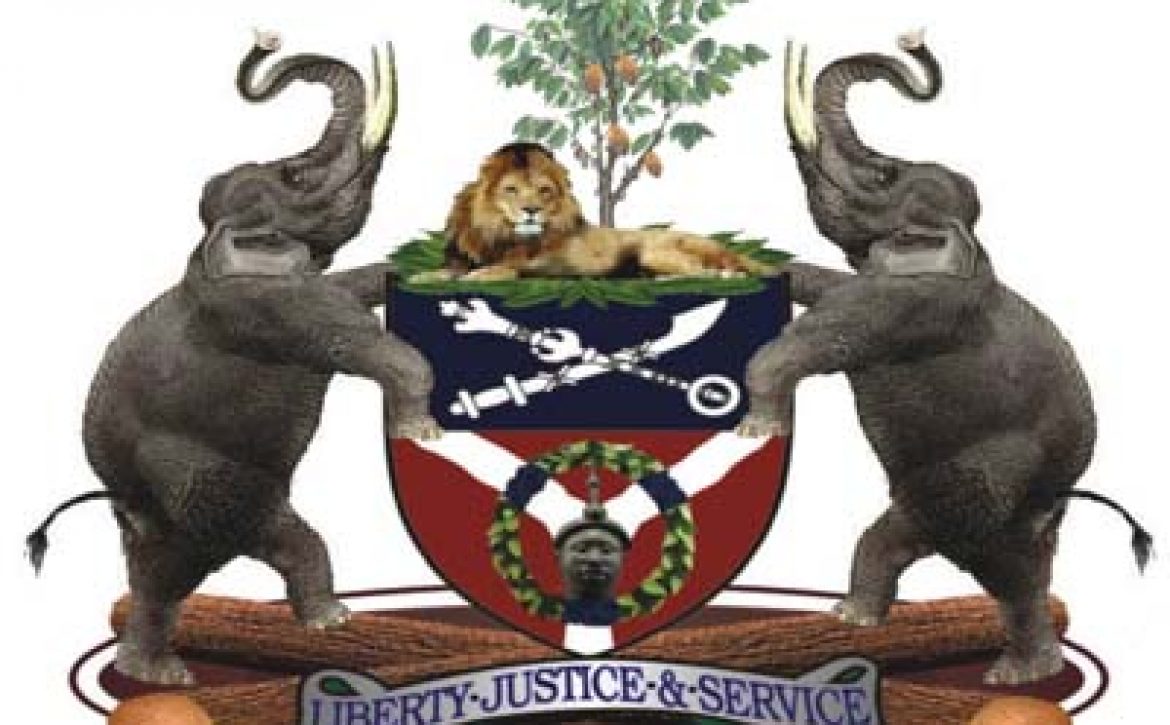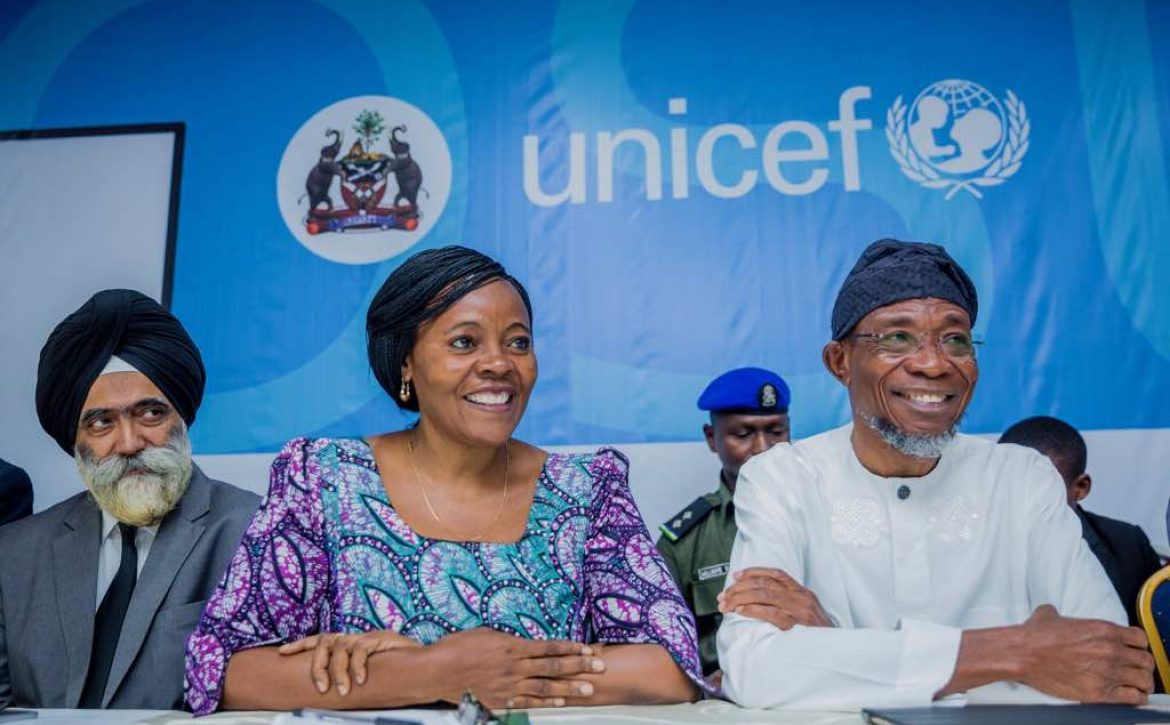
Category: Politics

The Governor of Osun, Ogbeni Rauf Aregbesola on Monday called for restructuring of Nigeria into at least six regions as part of moves to reduce cost of governance and free resources for development.

He said since one of the reasons for political complications is agitation for presidency by the different regions, the country can do with a presidium which would contain one president from each region with each of six assuming head of the presidium one year each within six years.
Aregbesola made these calls while speaking at the 24th year celebration and remembrance of the annulled June 12, 1993 election of Chief Moshood Kosimowo Olawale Abiola.
According to Aregbesola, it is time Nigeria was restructured in line with the federal system of government being operated in India.
He said in India, states are created based on people who speak the same language and have same cultural identities.
He said Nigeria should return to a parliamentary system of government if the country does not want to end up with indebtedness.
He said the federal system of government that operates 36 states can not work in the face of the economic realities, adding that the country’s revenue can not manage the system of government it operates.
He suggested that the state in the country be pruned to six states, based on geo-political zones and that each state should have a president elected to serve a single term of six years.
He said like the paliamentary system of government, the six presidents will elect a president that will head the country for one year and after each year a new president will be elected among the remaining ones, making it rotational.
He said in the case of the annulment of the June 12, 1993 election, those behind the annulment are enemies of Nigeria and the Black race, because the presidency of Abiola would have eradicated poverty in the country
He said, ” One major significance of the annulled June 12 elections is that M.K.O Abiola wanted poverty to be a thing of the past in Nigeria.
“Abiola meant total growth for the common man, that’s why he tagged his manifesto “farewell to poverty.” He attempted to banish poverty in all spheres of Nigerian life.
“Its a pity that the elections adjudged to be the most free and fair in the history of Nigeria was annulled without any tangible reason.
“If Abiola was allowed to rule for just four years, I can bet it with anybody that Nigeria would have been a better place today.
“The truth is that those behind the annulment of that election are the real enemies of the common man in Nigeria. They are also the enemies of growth and development of the country.”
Aregbesola said for the country to progress it’s people need to come togther as one as there is strength in unity.
He averred that the current presidential system of government the country is running is very expensive and the nation’s resources cannot sustain it.
He thus called for restructuring of the federalism and a rethink towards the parliamentary system of government the country operated during the First Republic.
Speaking on the need for Nigeria to grow and develop beyond its current state, Aregbesola stated that the growth of Nigeria is very key to the development of the black man all around the world.
He said for any black man from any part the world to be viewed with dignity and respect, Nigeria needs to be great, stressing that among every two or three black man in any part of the world is a Nigerian.
The governor stated further that if the nation must move forward, then every Nigerian must begin to have a collective mind and do away with self.
“It is funny that if Nigeria does not progress as a nation the entire black race in the world is doomed.
“Nigeria must grow and develop if we want the Black man to be viewed with dignity and respect We must begin to do away with self if we want to move forward as a nation.
“We need to go back to the parliamentary system of government in a bid to reduce the cost of running government in Nigeria,” Aregbesola stated.
The National Working Committee of the All Progressives Congress has Monday cleared Senator Mudasiru Hussein to contest the party’s primaries for the Osun West senatorial district holding tomorrow, Tuesday June 13, 2017.
This is the outcome of the meeting of the NWC in Abuja which reviewed the decision of the Appeal Panel which had earlier dismissed the appeal filed by Senator Hussain on Sunday.
By the regulation of the party, the decision of the NWC of the party is final.
Therefore, delegates for the APC West senatorial district primaries are to proceed to the designated centre for the exercise on Tuesday.
Signed:
Barr Kunle Oyatomi
Director, Media & Strategy,
APC, Osun
The daughter of the former Interim National Chairman of the ruling All Progressives Congress, Bisi Akande, wedded in Ibadan, the Oyo State capital, on Saturday.
The event was attended by leading lights of the ruling All Progressives Congress and the Federal Government, led by Acting President Yemi Osinbajo.
In attendance also was Senate President Bukola Saraki, Governors Rauf Aregbesola of Osun, Abiola Ajimobi of Oyo State, Rotimi Akeredolu of Ondo and other dignitaries.
See photos below:







The United Nations International Children’s Emergency Fund, (UNICEF), on Friday described the Governor of Osun, Ogbeni Rauf Aregbesola, as a symbol of service to the course of human development.

The international organisation hinged its commendation passed on the governor on his commitment to human and infrastructure development since he assumed office in 2010.
The Chief of Field Services of UNICEF Nigeria, Dr. Annefrida Kisessa, made this observation at a get-together party organised by the state in honour of the representatives from 15 states and leadership of UNICEF on a visit to Osun to learn more about the state’s Social Protection Programmes and its successes.
Dr. Kisessa expressed her delight over what she described as ‘good governance in action,’ saying Osun has revolutionalised governance in Nigeria.
She applauded Aregbesola’s sense of commitment and passion to humanity, describing Osun social protection programmes as one of the best in the country.
The UNICEF team head said the social intervention initiatives of Aregbesola have been assessed to be one of the most impactful, beneficial and rewarding.
According to her: “I have visited about 15 to 20 states in Nigeria and since I have been visiting, I have not seen a leader like Aregbesola with rare passion for people’s welfare.
“I have seen your passion to banish poverty, banish hunger, restore healthy living, promote functional and quality education for your people among others. I have seen your passion to develop your people and your state. I am really proud of your achievements because I have seen your indelible legacies in all sectors.
“With what I have seen, it is clear that Osun has shown that education is the key to development. Your programmes are no doubt centred on the people as your social protection projects are designed to better the lives of your people, especially the less privileged, vulnerable and downtrodden.
“All these have direct impact and reflection of your initiatives like O’MEAL, O’YES, O’HUB, O’REAP, O’AMBULANCE, among others as we all attested to during the course of this visit.
“I am also happy because all the achievements of this state are properly and accurately documented. I have seen that Osun has genuine statistics and data base for all its programmes.
“I have seen rare difference in governance in the case of Osun because, since I have been visiting states, Osun is the only state where sanitation takes precedence in the activities of the government as everywhere I have visited was clean and streets tidy even more than some of Abuja streets.
“Osun is a place I will like to be. I am very impressed with the quality of Osun Social Protection Programme. This shows the quality of Aregbesola’s leadership. It shows that Aregbesola is a very good leader and a symbol of service to humanity. I have come, I have seen and I have many memories to talk about.”
Director General, Office of Economic Development and Partnership, Dr. Charles Diji Akinola, said the social protection programmes of Osun has indeed helped to ameliorate poverty and improved the well-being of the citizenry since Aregbesola became governor.
He said the state had been further encouraged by the supports from agencies locally and internationally, saying the contribution of UNICEF in consolidating and solidifying the initiatives of Osun government on its life-long human and capital development projects remains commendable.
“About two years ago, Osun Government had collaboration with the United Nations International Children’s Emergency Fund on the need to strengthen the state’s social protection programme. Today, the visit of the leadership of the UNICEF to Osun is a demonstration of the robust relationship, between the organisation and the state.
“The idea behind this partnership is to consolidate on the Osun’s social protection programmes, which has been the central concern of this administration.
“13 of these projects would be discussed and shared with the visiting team. We have been encouraged with what UNICEF had done in ensuring a mutually-beneficial partnership,” he said.
In their separate remarks, the Zamfara State Commissioner for Education, Alhaji Moukhtar Luga, said Aregbesola is one of the successful Nigerian politicians that have made the country proud.
He noted that the governor has changed the face of governance in such a way that old believes and practices have been remodeled.
He said: “I have seen so many projects. I have seen the quantum of infrastructure development put in place by Aregbesola-led administration. I have seen a revolution going on in all sectors.
“I have seen how people are made to realise that change is about good governance and commitment to human and capital development. I have seen the passion and commitment to development as some of the Osun policies and programmes have been replicated locally and internationally.
“Aregbesola had built institution with his unwavering commitment to development. You have chosen a very hard-stick to ensure success for your state.
“I have gone round some of the schools built by your administration and I am impressed with what I have seen so far. I am going back to my state to ensure the replication of all these programmes.”
Sokoto State Commissioner for Health, Dr. Sheu Balarabe, said he was elated to see the achievements of the state in all sectors. He described as heart-warming all he saw on his tour of some of the facilities, saying all the governor’s intervention programmes are highly conscious of the people.
“We have learnt a lot most especially on how things are being done in the state to record these laudable feats. We have been exposed to programmes like Osun Rural Enterprise and Agricultural Programmes called (O’REAP); Osun Youth Empowerment Scheme (OYES). We have also be told of how model schools built across the state came to limelight as well as other social protection programmes.
“I am proud of all these projects because I have been to schools. I have seen how children are being motivated with government programmes. I have seen the energy in the pupils as a result of support, which your government is making.
“All you are doing is about building an assured future for your state and the country as your projects are designed to meet the present and future needs of the people of the state.
“Osun has built a template and as well harnessed its potential in such a way that Nigerian government and by extension the whole world could learn and tap from. Osun has built a template for education revolution. So, we have learnt a lot and we are ready to apply this in our states.”
The Head of Service, Kebbi State, Alhaji Abubakar Idris, said the governor has in six years done what his peers would find difficult to do.
“Aregbesola had achieved within six years of his administration what many of his peers could not achieve even if given third term to administer their states.
“Aregbesola is one of the most successful politicians in Nigeria. You are one of the respected governors in Nigeria whose passion for development could not be tainted or distorted.
On his own, the representative from Federal Ministry of Economic Planning and Budget, Dr. Samson Ebimaro, said what he saw in Osun are very amazing, emulating and commendable as they justify the honour given to the Governor in 2013 as one of the few working governors in Nigeria.
“I know all these are achieved with the supports which Mr. Governor received from his cabinet. So, as donor to both local and international agencies, we shall continue to support and encourage Osun Government to enhance quick realisation of its objectives since the state has been taken first in all sectors,” Ebimaro said.
The Lagos State Director of Economic Partnership, Ministry of Economic Planning and Budget, Mr. Adejola Bankole, noted that with what he has seen in Osun, it is clear that all negative reporting in the newspapers are being concocted by some people to discredit Aregbesola’s administration.
He said that all he had seen contradicted adverse things that people have been reading on the pages of the newspapers.
He continued; “I have gone round the state and I have seen real development and change and I encourage Mr. Governor not to be deterred but rather, double his efforts in taking the state to the Promised Land.”
Earlier, Chief of Field Services, UNICEF, Akure, Nigeria, Dr. Tejinde-Singh Sandhu, asserted that in all practical sense of it what good governance is and how it could benefit the people.
He said; “Osun government had demonstrated what government and good governance is all about as this was reflected in the passion of Governor Aregbesola to humanity, saying he has not seen “In any state in Nigeria where government caters for its citizens from cradle to grave as is being done by the Aregbesola-led administration in Osun.”
In his response, Aregbesola expressed gratitude to all representatives of the 15 visiting states most especially the leadership of UNICEF in Nigeria.
He said, “I thank you all for choosing Osun and for identifying with our successes in supporting our people. Our mission is to provide better quality of life and advance the general welfare of our people.
“It is our belief that this partnership will be sustained in furtherance of our collective efforts to enhance the condition of living of our people.
He therefore enjoined UNICEF’s leadership on the need to prioritise seminars and meetings, which according to him would help to further strengthen development among the state of the federation.

Dr. Olugbile, before his appointment, was with the Health, Nutrition and Population Global Practice of the World Bank managing projects in Nigeria and also at the West Africa sub-region.
The Governor, in a statement by the Director, Bureau of Communication and Strategy, Mr. Semiu Okanlawon, stated that Olugbile in his new role will be responsible for overall supervision and coordination of all World Bank and other donor funded projects in the state.
The statement added that the new Technical Adviser to the Governor on development partners will head and work with a team in the newly created Program Delivery Unit (PDU) in the office of the Governor.
According to the statement, “Dr. Olugbile, in his new role will be responsible for overall supervision and coordination of all World Bank and other donor-funded projects in the state on behalf of Mr. Governor.
“In addition to overseeing existing projects, he has also been tasked with exploring opportunities to partner with donor agencies and other development partners to secure funding and technical assistance for projects across all sectors in the state”.
The Governor has therefore requested that all Permanent Secretaries and project coordinators to furnish Olugbile with the list of all donor-funded projects and contact details of project team members in their ministries, agencies or parastatals to the PDU located at the Technical Advisers’ block in the office of the Governor with appropriate project documents.
“In the same vein, all donors or development partners approaching any ministry, agency or parastatals should equally be directed to the PDU for attention of Dr. Olugbile”. The statement added
The Government of Osun has declared Monday a public holiday to mark June 12 celebration in the state.

A statement on Friday, by the Director, Bureau of Communication and Strategy, Office of the Governor, Mr. Semiu Okanlawon, announced the holiday.
The statement said: “In line with its established policy of observing June 12 of every year as Democracy Day, the State Government of Osun has declared Monday, June 12 as public holiday.”
Okanlawon stated that the public holiday became imperative in view of the fact that June 12 marked a watershed in the history of democratic evolution in the country.
It was the day the June 12, 1993 presidential election, adjudged to be the freest and fairest in the history of Nigeria took place.
Late Bashorun Moshood Abiola won the election. However, victory was annulled by the then military head of state, Gen. Ibrahim Babangida.
A call has gone to the people of the State of Osun to have good maintenance culture on dividends of democracy that are being brought to their door steps by the present administration .

He also called on the contractors that are yet to complete their electrification projects to return to site immediately and deliver as soon as possible.
The Special Adviser to the Governor on Rural Infrastructure and Community Affairs, Mr Babatunde Ibirogba made the calls while addressing journalists in his office after the inspection of rural electrification projects across the State.
He said that the ongoing rehabilitation of the electricity supply to Ago-Owu Farm-Settlement, in Isokan LCDA would boost the commercial activities of the area as well as making life more meaningful to all and sundry.
Mr Ibirogba pointed out that the benefiting communities should protect the electricity facility that are being put in place by Governor Rauf Aregbesola saying that efforts are in progress in making other rural areas benefit as well.
He then enjoined all and sundry to give maximum support to Ogbeni Rauf Aregbesola’s administration.
As the Government of the State of Osun has received the first and second consignments of new Long Lasting Insecticide Nets for distribution in the state, officials of the State Ministry of Health ,in collaboration with the Federal Ministry of Health ,will begin the replacement of the old nets with new ones.

This was disclosed in Osogbo by the Director of Public Health in the State Ministry of Health, Dr Gbenga Adepoju while on advocacy visit to the Ministry of Information and Strategy.
Dr Adepoju, who led the advocacy team, which include officials from the Federal Ministry of Health and non- governmental organizations, explained that one million mosquito treated nets were distributed in the state three years ago while three million mosquito treated nets will now be distributed.
He further explained that evidence has shown that the mosquito nets presently in use may have lost the expected potency to kill mosquitoes hence the production of the new mosquito nets by the Federal Government through the National Malaria Elimination Programme.
Dr Adepoju then pleaded with relevant officials of the State Government, all local governments and LCDAs as well as local communities in the state to key-in into the programme and ensure the success of the distribution of about three million new mosquito treated nets which will be distributed to all households in the state.
Receiving the team on behalf of the Coordinating Director, the Director of Press and Public Relations in the Ministry of Information and Strategy, Mr Dapo Ajayi, who received the team, assured that the Ministry will partner with,collaborate and support and thereby ensure the success of the programme in the state.
…As Aregbesola lists models for poverty eradication
The various social protection policies being implemented in Osun by the Rauf Aregbesola-led administration came up for a four-day study on Thursday as the United Nations International and Children Emergency Fund UNICEF brought sixteen other Nigerian states for a tour.
This was even as the Chief of Field Officer and Coordination of the United Nation’s International Children’s Emergency Fund (UNICEF), Dr. Annefrida Kisesa, commended Governor Aregbesola for being committed to human and capital developments of his people in spite of economic challenges

UNICEF and the sixteen other states have organised a social protection tour of Osun which will last for about four days to enable them understudy the social protection initiatives being implemented in Osun.
The programme will also enable them to study the impact of the wellbeing of the children and women and draw lessons to formulate policies on social interventions programmes of the organisation and the participating states.
Visiting officials were drawn from Abuja, Bayelsa, Bauchi, Enugu, Lagos, Katsina, Ondo, Sokoto, Rivers, Zamfara, Akwa Ibom, Kebbi, Anambra, Benue, Delta in addition to UNICEF staff from various field offices in Nigeria.
Speaking at the programme organised to welcome the participants in Osogbo, Governor Aregbesola commended UNICEF for the great work it is doing in Nigeria, which informed the tour to Osun as a model to be studied and recommended for other states.
He held that the tour of Osun is very humbling, stating that when the state sets out to implement social protection programmes, her primary consideration was to take care of the people.
The Governor added that his administration never thought that many of the state’s novel programmes would be considered models worthy of emulation.
According to him, “When my administration was inaugurated, we said that the biggest challenge at the time was the army of unemployed and disoriented youth that constituted a menace to society and to themselves.
“We then set up the Osun Youth Empowerment Scheme (OYES) in less than 100 days to engage 20,000 youths in public works. The cadets were drawn from all the local governments in the state, without consideration for their political, ideological, ethnic and religious backgrounds.
“We also insisted that their uniforms are sewn by tailors in the states, through their guilds and their equipment like cutlasses, hoes, rakes, booths etc. were purchased directly from markets in all the local governments in the state. We have had two cycles of OYES and we still have the cadets at work.
“The N10,000 monthly allowance we pay them percolates into the local economy in house rent, feeding, transportation and household items, thereby boosting the state’s GDP. The direct benefit of OYES was that crime and unemployment rates dropped drastically in the state”. He emphasised.
Aregbesola told UNICEF and participants that for his government to have integration in the various empowerment programmes, it set up an inter-ministerial agency, the Osun Rural Enterprises and Agriculture Programme (OREAP), which comprises the ministries of agriculture, lands, commerce, rural development, finance, health, works, among others.
He noted that the policy has attracted more people, especially women and youths to farming, stating that one flagship programme of empowerment in the state is the home-grown school feeding programme, tagged O’MEALS.
Aregbesola said, “This is an integrated policy of feeding Elementary 1-4 pupils healthy and nutritious meals every school day.
We engaged the services of 3,007 community caterers to prepare the food for the pupils as hygienically as possible.
“To be able to achieve this, the caterers were first medically screened and certified fit and proper, retrained on the rudiments of cooking and particularly made to understand the importance of, one, hygiene in disease prevention and secondly, good nutrition to healthy living.”
Director General, Office of Economic Development and Partnerships and Coordinator in Osun, Dr. Charles Akinola, said the purpose of the visit was to provide a platform for interaction on the protection, care and empowerment of children, women and marginalised groups through social protection initiatives of Governor Aregbesola.
“It is our great pleasure to have shown the participating states and the top officials of the UNICEF some of the successes which the present administration had accomplished since inception.
“What we have today is the result of the interaction which the state have had with the UNICEF on the social protection programmes of this administration.
Earlier, the Chief of Field Officer and Coordination of the United Nation’s International Children’s Emergency Fund (UNICEF), Dr. Annefrida Kisesa, commended Governor Aregbesola for being committed to human and capital development of his people in spite economic challenges
Kisesa said UNICEF was proud to identify with the state’s achievement and impact in raising the standard of living of the people of the state through its commitment to social intervention policies and programmes.
The UNICEF Chief of Field Officer and Coordination, said the international organisation was privileged to partner with the state in its bid to learn on how to harness its potentials to further impact in the general wellbeing of the people in the world.
According to her, “It is amazing that the team of UNICEF officers as well as representatives from the 16 states of Nigeria are here to learn on how to learn and adopt Osun social investment scheme that had impacted greatly in the lives of the citizenry.
“To us as UNICEF, it is our collective beliefs that the only way the larger number of people could be reached with our policies and programmes that centre on the need to eliminate poverty and hunger was to partner with Osun state government that has already succeeded in its social protection initiatives and policies.
“In our quest to achieve this objective, the organisation deemed it fit to collaborate with Osun government through which about sixteen states in Nigeria were carried along to have a plenary session in the state on the need to study the success of the state on many of its social investment scheme”. She added.
Speaking, representative of Federal Ministry of Economic Planning and Budget, Dr. Samson Ebimaro, lauded the efforts made by the Aregbesola’s administration in turning Osun to a model in all sectors of the economy.
He said the Ministry was surprised that a small state like Osun has turned to be a pacesetter through which many of her policies and programmes are being adopted and domesticated by her peers and Federal Government.
Dr. Ebimaro disclosed that the National Social Protection Policies, an economic ideology drawn from Osun by the Federal Government had been unanimously endorsed by all the federal ministries and their ministers.
According to him, social protection policies remained a mix of policies, programmes and projects designed for individuals and households throughout lifecycle aimed at ensuring that poverty, hunger among other social challenges are eliminated in the society.
“It is for this singular reason that Osun state government deserves commendation as it has successfully championed this cause at ensuring that government and governance are centred on the people.
“Though this is surprising because no one could have thought that a state like Osun within the few years of creation coupled with her resources, could turn to be a model to which others adopt to succeed in governance.
“On our part, the National Social Protection Policies designed to rescue Nigerians out of poverty and vulnerability, would further help to restore abundance in the general wellbeing of the citizens as lives would be positively impacted through this scheme”.

